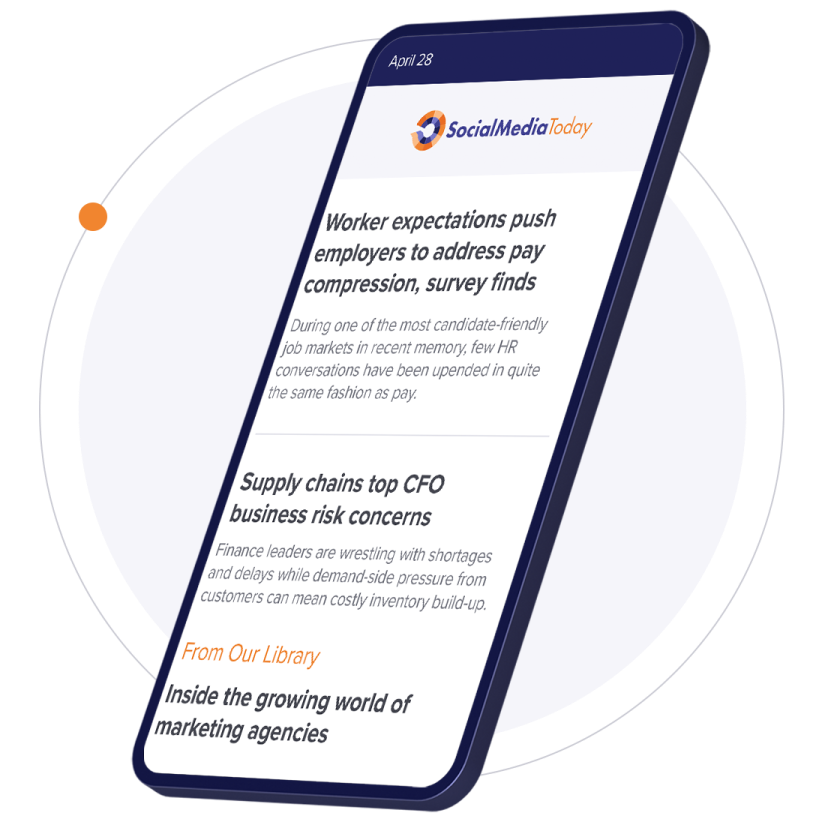TikTok is rolling out a new option that enables you to start your TikTok feed afresh, if you no longer like the videos being recommended to you, while it’s also developing new systems to avoid repetition, and limit exposure to harmful elements.
First off, on the new feed refresh option – over the last few months, TikTok has been testing a new process that essentially enables users to start their account over again, by resetting what the algorithm thinks they might be interested in.
Now, TikTok is rolling that option out to all users.

As explained by TikTok:
“On TikTok, For You feeds help people discover a diversity of content, creators, communities, and products. But we also understand that there are times when people's recommendations don't feel relevant anymore, or provide enough topical variety. So, we're rolling out a way to refresh For You feed recommendations if they no longer feel like they're for you. When enabled, this feature allows someone to view content on their For You feed as if they just signed up for TikTok. Our recommendation system will then begin to surface more content based on new interactions.”
It’s a good option, which gives users more freedom to dictate their in-app experience – which is something that other social apps likely can’t provide, or at least haven’t been able to in the past.
Meta’s longstanding advantage in the social media space has been its all-powerful social graph – i.e. everybody you know is on Facebook, so if you want to stay up to date, and see all the things that your friends and family are interested in, you have to also be there.
Over time, Facebook and other apps have refined this, with your Likes and follows dictating what the algorithm shows you next. But TikTok’s algorithm is different, in that it learns much faster, based on your actual viewing habits, with your behaviors in the app constantly updating and refining its algorithmic system, which then enables it to showcase the best-performing videos from across the app, as opposed to being limited by your connections and explicit activity.
This has changed the paradigm for social apps. Whereas once, social platforms were reliant on manual actions to show you more relevant content, TikTok’s automated algorithms are now so advanced that it can give you a better user experience, even if it knows nothing about you, other than what you do in the app. Every other app is now playing catch up, and working to improve their own automated recommendations, but thus far, none have got close to the compelling experience provided by TikTok’s highly attuned system.
Which also enables it to offer updates like this, because it knows that its system is so good at showing users content based on their activity, that it can even let you start all over again, and be confident that it’ll align with your interests quickly.
Which is a big advantage, and it’ll be interesting to see what the user experience is like in refreshing your feed, and shedding your past interests in the app.
On another front, TikTok has also provided some new insight into how it’s improving its recommendations systems to avoid content repetition, and in particular, to ensure that users aren’t shown too much potentially harmful or triggering content.
“An inherent challenge of any recommendation system is ensuring the breadth of content surfaced to a viewer isn't too narrow or too repetitive. We're intently focused on this challenge, and work to design a system that intersperses a variety of topics. For instance, viewers will generally not be served two videos in a row made by the same creator or that use the same sound, and we try to avoid showing people something they've seen before.”
This doesn’t always work, but again, TikTok’s advantage in this respect is that it’s not bound by your social graph, in regards to what it can show you, so it has a huge, never-ending stream of content to choose from when populating user feeds.
“In addition, we work to carefully apply limits to some content that doesn't violate our policies, but may impact the viewing experience if viewed repeatedly, particularly when it comes to content with themes of sadness, extreme exercise or dieting, or that's sexually suggestive.”
TikTok says that, based on expert advice, enabling users to see how others cope with difficult emotions can be beneficial, especially for teen users, but there does need to be limits on over-exposure, which is where it’s focused.
“Our systems do this by looking for repetition among themes like sadness or extreme diets, within a set of videos that are eligible for recommendation. If multiple videos with these themes are identified, they will be substituted with videos about other topics to reduce the frequency of these recommendations and create a more diverse discovery experience. This work is ongoing, and over the last year alone, we've implemented over 15 updates to improve these systems, along with expanding to support more languages.”
The core working principle is that users should be able to share and discuss sensitive topics, but shouldn’t feel like they’re being dragged down rabbit holes that repeatedly expose them to such, so TikTok is working with a range of experts in determining optimal exposure limits, which will also be built into its algorithmic process.
Both updates are important areas of development, which can have significant benefits for the user experience. And while it may seem like enabling users to reset their feeds could impact ad relevance, in that you potentially lose some of the context of what people may be interested in, it could also, conversely, improve such, by refreshing people’s interests over time, which will enable brands to get more relevant promotions in front of the right people.
It’ll be interesting to see how each changes the user experience, and whether it leads to improvement – which could eventually see other platforms adopt similar measures.







